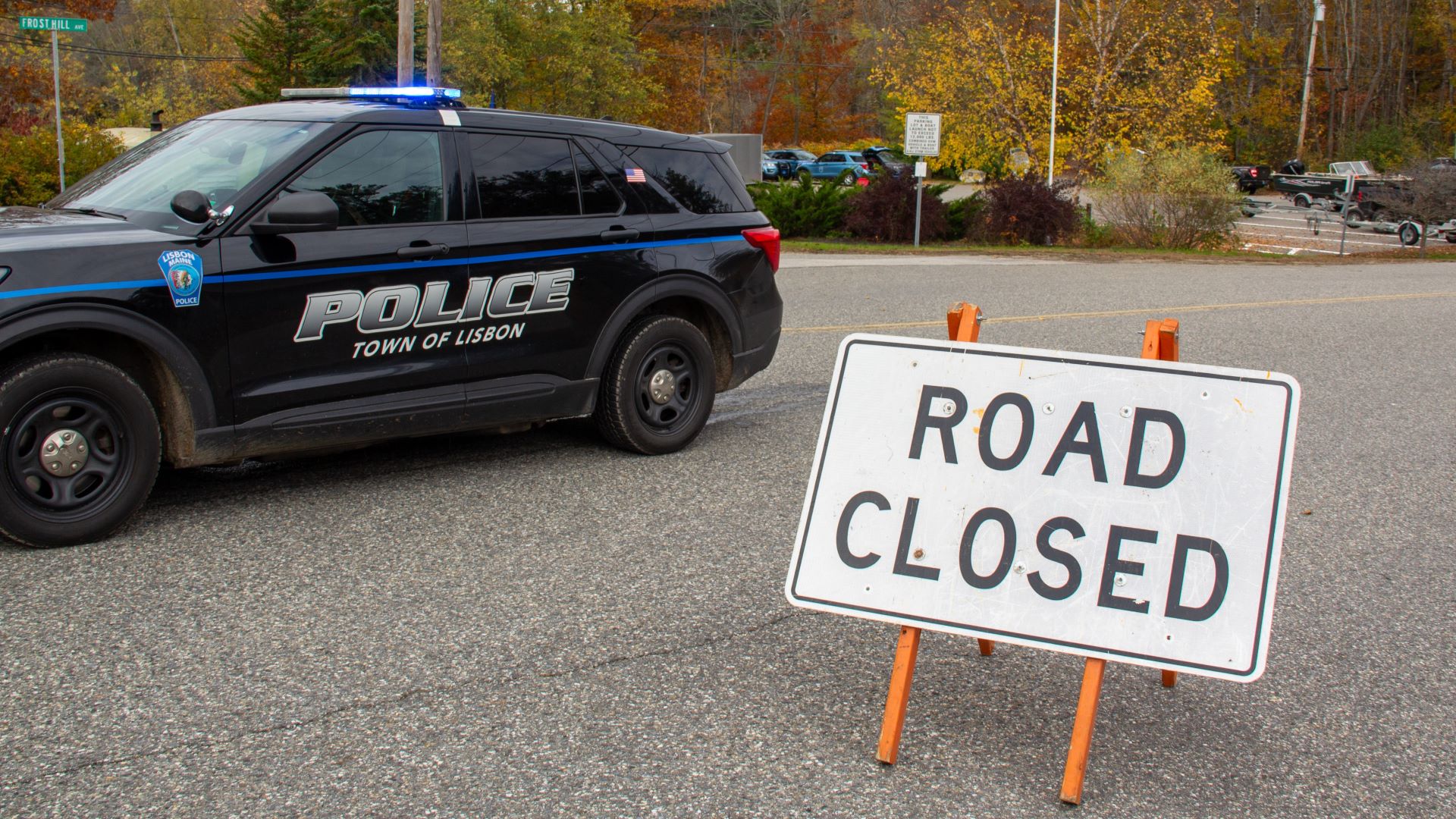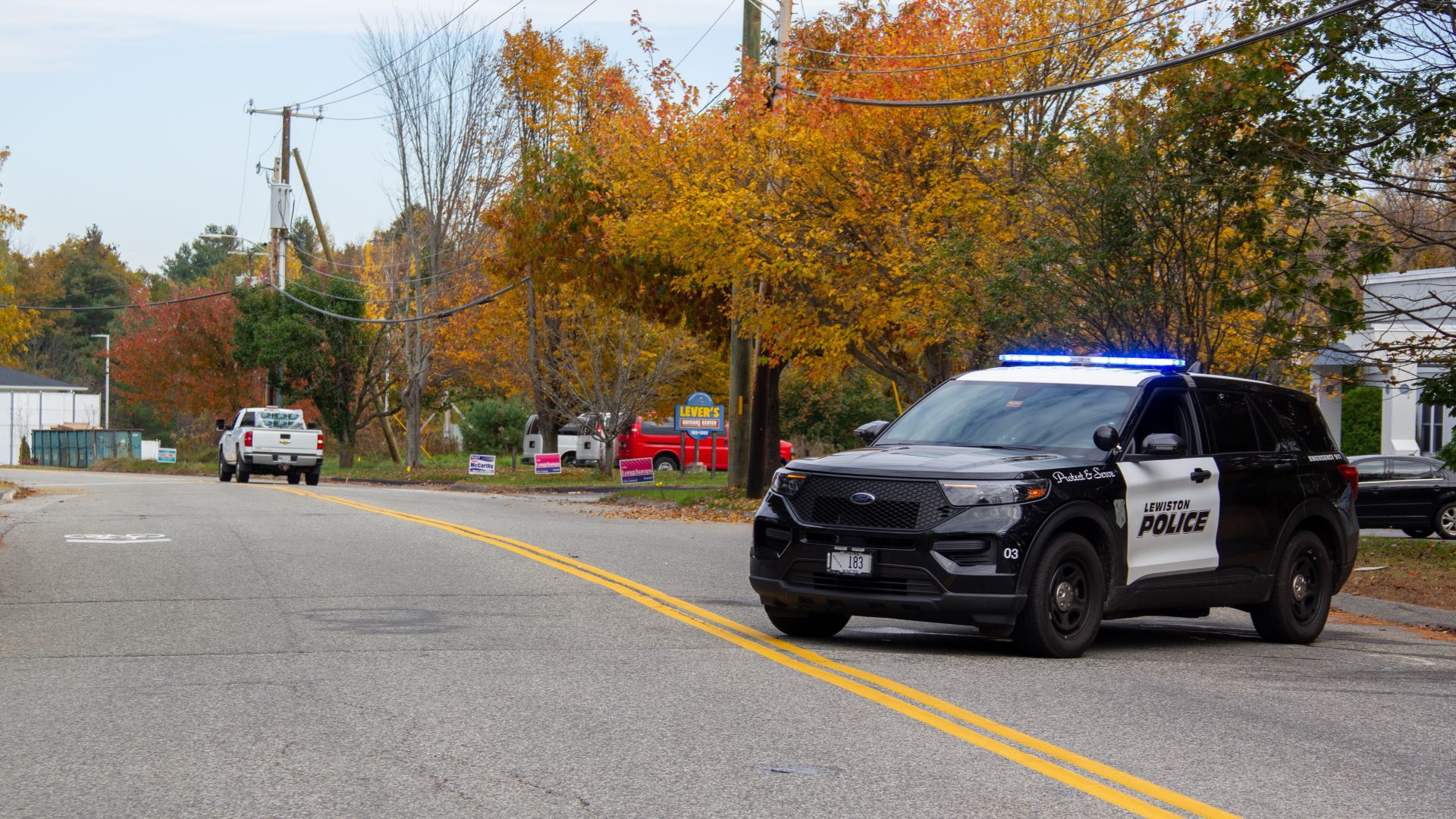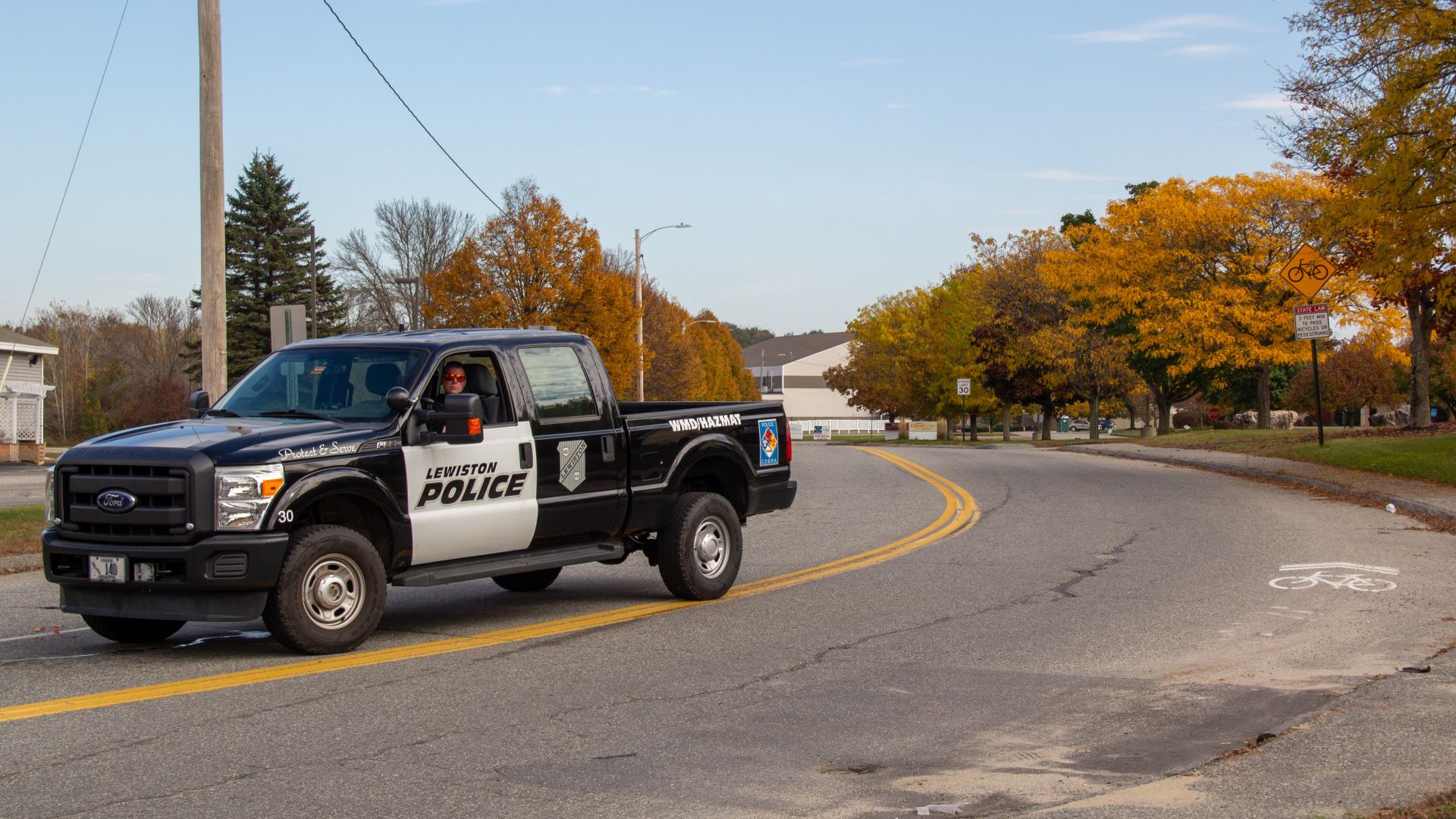On the afternoon of Sept. 15, Ellsworth Police Corporal Kelvin Mote sent an email to the Sagadahoc County Sheriff’s Office requesting the agency conduct a “well-being check” on a Bowdoin man named Robert Card.
At 2 a.m. the night before, a “Sargeant Hodgson” texted Mote, who was also Card’s superior in the Army Reserve, saying he was worried about his friend. Hodgson said that Card claimed he knew people were calling him a “pedophile” and that Card was going to “shoot up” the unit’s drill center in Saco.
When Hodgson told Card to “knock it off,” Card punched him, according to Mote.
“Change the passcode to the unit gate and be armed if (Sergeant First Class) Card does arrive. Please. I believe he’s messed up in the head,” Hodgson wrote, then added later: “I believe he’s going to snap and do a mass shooting.”
People around Card had been flagging concerns about his mental state to authorities for months, including to a school resource officer in Topsham, where his son was a student, a message that was passed along to the Sagadahoc County Sheriff’s Office and to his Army Reserve unit in May.
Card’s ex-wife told Sagadahoc Deputy Chad Carleton that Card had recently picked up 10-15 handguns and rifles from his brother’s house, according to the May incident report, but it’s unclear if authorities took any actions beyond speaking with Card’s family and Reserve superiors.
The same September day the Sheriff’s Office received Mote’s email, Deputy Aaron Skolfield went to Card’s Meadow Road home.
Skolfield wrote in a report that he couldn’t find Card and requested the agency send another deputy on the evening shift to try again. Skolfield also put out a File 6 teletype — similar to a missing persons report — to law enforcement agencies statewide, with special attention to the Saco Police Department.
“Caution officer safety — known to be armed and dangerous … Multiple addresses have been checked with negative contact so far. If located, use extreme caution, check mental health wellbeing and advise Sagadahoc SD via Sagadahoc comms,” the teletype said.
The next day, Skolfield returned to Card’s home and spotted his white Subaru in the driveway. The deputy requested backup, and another officer joined him about 45 minutes later.
The two officers knocked on Card’s door and could hear him stirring behind the door. But Card didn’t answer. Then, because the deputies were “in a very disadvantageous position,” they decided to back away, Skolfield wrote in a report.
This second welfare check marked the last attempt of any Maine law enforcement agency to reach Card. The File 6 was canceled on Oct. 18.
A week later, Card walked into a bowling alley and a bar in Lewiston. He killed 18 people and injured 13 more. It was the deadliest mass shooting in Maine history and the deadliest in the U.S. this year, according to a database maintained by USA Today in partnership with The Associated Press and Northeastern University. After a three-day manhunt, Card was found dead of a self-inflicted gunshot wound.

The Sagadahoc County Sheriff’s Office’s handling of the welfare checks is indicative of a broader reality among Maine law enforcement agencies: there is no set-in-stone way to respond to mental health-related calls for service.
A Maine Monitor investigation found Maine law enforcement agencies mostly lack formalized procedures for conducting such welfare checks, which often number in the hundreds each year for a single agency, demonstrating the weight of an individual officer’s discretion and recommendations from their superiors.
“It’s all based on circumstance,” Sanford Police Department Major Matt Gagné said.
How an officer responds to and follows up on a mental health-related call for service is dependent on a number of factors, from the information available at the time to an individual officer’s experience in the field, according to a survey The Maine Monitor conducted with agencies around the state and interviews with nearly a dozen law enforcement officials.
The Maine Criminal Justice Academy — which oversees training and certification for all Maine law enforcement officers — has 13 minimum standard policies that all agencies are mandated to adopt.
And while there is one policy on dealing with mental illness, involuntary commitment and protection from substantial threats, it lacks specific steps for responding to a welfare check unless an officer initiates protective custody, involuntary commitment or a weapons restriction order. In those instances, state law prescribes certain procedures an officer or medical practitioner must follow.
The policy does not require an agency draft protocols on what an officer on a welfare check should do if they are unable to make contact with an individual, which raises the question of when a welfare check can be considered completed.
The policy is more of an outline that individual agencies can tailor to their departments. Kennebunk Police Department’s policy, for example, mandates a minimum of two officers, including one crisis intervention-trained officer, respond to these calls, and they must notify the on-duty patrol supervisor.
Cumberland County Sheriff’s Office’s policy, on the other hand, does not specify how many officers should reply to a call or if a supervisor should be notified, only that if an officer takes any “formal action” regarding a person experiencing a mental health crisis it should be documented in an incident report.
Officials from 10 agencies told the Monitor they had no written policy beyond the Academy’s minimum standard and that it would be difficult to write one given the range of possibilities.
“There are certain procedures that we take to try to find people to determine if there is still a danger,” Piscataquis County Sheriff Bob Young said. Officers “do the best that you can with the information you have.”
Gagné, who oversees Sanford’s mental health unit, said there are steps an officer “knows just through our training and experience.”
“It really depends on what the nature of the calls are. There is no specific written protocol only because the situation is dynamic and it’s always changing,” he said. “It’s based on the information and the evidence that you have at the time of that call.”
If a concerned mother calls to say her son didn’t show up for dinner, Gagné said, an officer may ask her questions such as, How old is he? Is this uncommon for him? Does he have a cell phone? Has he made any threats? Has he ever had suicidal ideations? Does he take medication for anything or have any mental health diagnoses?
“The officer is going down this kind of mental checklist for these types of calls and then from there (the officer) can take these steps depending on what the answer to those questions are,” Gagné said.
An officer can run a person’s license and registration through the Bureau of Motor Vehicles’ database. They could go to the residence listed, knock on the front door, peer in their windows or ask a friend or family member if they have a key. Or if there’s reason to believe an individual took off on foot, officers might bring in canine units to try to track the person.
If the property is in another jurisdiction or out-of-state, the officer can contact the local agency and ask them to visit. But if there’s no answer, an officer can’t knock down a door without probable cause and a warrant. Likewise, an officer can seek a warrant to track a person’s cell phone, but only if they can prove urgency.
Agencies can also issue a teletype communication that is pushed out through dispatch centers statewide or regionally and can be directed to a specific agency to be on the lookout for someone.
However, teletypes are “not a perfect system,” said Cumberland County Sheriff Kevin Joyce, and there is a lot of room for teletype communications to “go completely under the radar.” His agency, which covers Maine’s most populous county, receives about 20 to 30 teletypes a day, which is a lot when considering everything else going on in a typical day, he said.
An officer can also contact family and friends, search their computer-aided dispatch system for booking records or notes from previous contacts, or reach out to the Maine Information and Analysis Center, based in the Department of Public Safety in Augusta, if there is reason to believe that a person may be or is heading out of state.
“You’re really trying to do everything you can to bring that to some resolution where you actually make contact,” Farmington Police Chief Kenneth Charles said. “It might be nothing, which is great, but you really don’t want to close it out with, ‘You know, yeah, they had concerns, but we gave up on trying.’”
Joyce said he’s not sure “where those attempts end,” although in the case of the Lewiston shooting, “we know the end story.”
“Again, it depends on the circumstances. And then the question is, you know, how much is due diligence?” Joyce added, “If it was 100 times, should it have been 101 times? It just — it all depends.”

It is difficult to come up with a precise snapshot of how often law enforcement officers respond to welfare check requests or mental health calls, the Monitor found. There is no statewide, central reporting database that houses this kind of information. How calls for service are dispatched or documented is not standardized across agencies, officials told the Monitor.
When dispatchers receive a call for service, they categorize it based on the initial information available, officials told the Monitor. If an officer believes dispatch categorized a call inaccurately, they can request a change or note the nature or circumstance of a call in an incident report.
Ultimately, however, how a dispatcher or officer categorizes and describes a call for service is up to their individual interpretations.
Because of that, no two agencies’ data are exactly comparable, a conclusion confirmed by a Monitor review of call volume data from eight agencies obtained through Freedom of Access Act requests.
Even within agencies, that data can be tough to parse. Though some agencies have internal methods for tracking welfare checks and mental health calls, it’s still possible the data does not capture every instance in which an officer responded to a mental health call, some of the officials said.
Roy Hodson, the police chief for Mexico, said he reviews call logs and reports and manually flags the ones with a mental health component. He tries to do this daily, he said, but conceded that sometimes he gets pulled away to other tasks or simply misses some. He also noted not all “welfare checks” are mental health-related.
During the first 10 months of this year, Mexico Police responded to 99 mental health calls. During the same period, officers responded to 127 welfare checks, seven of which were flagged for mental health.
“It’s not 100% accurate because I guarantee if I went in and had time to go through the 3,000-plus calls, I’m sure that number will be higher,” Hodson said.
Cumberland County Sheriff’s Office, an agency many times the size of the Mexico Police Department, responded to nearly 1,500 calls where the nature type was recorded as “mental health” from January 2022 through October 2023. During the same period, CCSO responded to about 1,200 welfare checks. The agency recorded more than 67,000 calls for service in that 22-month period.
Kennebunk, Scarborough and Sanford police departments, which all have mental health divisions, use the call category “mental health support” for when the departments’ licensed clinicians conduct follow-up calls with individuals.
Cross-agency communication ‘not a perfect system’
Officers conducting welfare checks often seek out information from other agencies to help locate a person or to learn more about their history. But that does not always work out perfectly.
Charles, from Farmington, said his department nearly hit a dead-end this November while attempting to contact a man who had recently moved to town and was the subject of multiple nuisance harassment and criminal trespassing complaints.
When Farmington police officers and a Western Maine Behavioral Health crisis worker went to the man’s house, the man wouldn’t engage with them and refused to come outside, but Charles said responders could tell he was experiencing some sort of mental health issue.
“Based on the information we had, you know, it really felt squishy,” Charles said. “He’s uncooperative, he won’t come to the door, he won’t talk to us, he won’t talk to the crisis worker. What do you do?”
He was not committing an arrestable offense at the time, Charles said, so officers considered placing him into protective custody, though they still wanted to know if he had a history of mental illness.
Officers eventually figured out the man was a veteran because they were able to see he had previous interactions with Waterville Police and gave them a call to learn more.
From there, Farmington police reached out to the U.S. Department of Veteran Affairs, which sent over a social worker. Unlike the officers and the crisis worker, the VA social worker convinced the man to exit his house. Police also learned the man had an extensive mental health history and had been off his medication, which helped make the final decision to put him into protective custody.
The man was eventually transported to Franklin Memorial Hospital.
“Boy, I thought this was going to be (an) ongoing” issue, Charles said. “You know, are we going to be tying up resources with surveillance waiting for him to come out and keep him contained? (It was) a very difficult situation.”
Without information from the VA and additional records from Waterville, Charles said his agency would have been at a loss on how to adequately respond.

Such deficits in information can be common occurrences, Charles said, because of limitations with agencies’ computer-aided dispatch programs.
Dispatchers, 9-1-1 operators and others use CAD systems to take incoming calls, assign priorities and record and push out information to first responders through mobile data terminals, radios or phones.
Some CAD systems also function as a records management system, where agencies can log incident reports and research previous encounters with a person or other in-house records. For the most part, agencies that use the same CAD system can “speak” with each other, or do cross-agency checks.
Waterville Police use the same program from Information Management Corporation — more commonly referred to as IMC — as Farmington, said Charles, which is why they were able to find the agency’s previous encounters with the man and determine that he was a veteran. Had the man previously lived in Oxford County, where all the agencies there use a system called Spillman, Farmington wouldn’t have been able to find those records.
“So we were able to see that, luckily, Waterville had previous dealings (with the man),” Charles said. “But any involvement in a Spillman agency, we wouldn’t have known.”
Charles underscored that having this kind of access to information can help officers determine whether a person is a threat to themselves or others and should be placed in protective custody.
The incompatibility of CAD programs can be an obstacle in getting to that information, agreed Jay Police Department Chief Richard Caton IV.
“It would be nice if all of the state of Maine was on one computer system and had access to that,” Caton said.
Efforts to find a solution have been “informal at best,” Charles said. However, Cumberland Police Chief Charles Rumsey, who is the immediate past president of the Maine Chiefs of Police Association, said he has not been part of any formal conversations on creating a unified CAD system.
“So I’m not telling you there wouldn’t be benefits to us all being on one system. Potentially drawbacks, too. I don’t know, I’ve never studied the matter,” Rumsey said. “But I don’t know that I have found that to be a hindrance to us doing a thorough job when the situation is demanding it.”
Instead of building a new system from scratch, Shannon Moss, the Maine Department of Public Safety spokesperson, floated the idea of working with companies that own Spillman and IMC to improve the databases’ compatibility with one another and allow law enforcement officials to search for names between agencies, even if they used different systems.
However, it would be a daunting task to create a unified CAD system for all of Maine’s 130 law enforcement agencies, Moss said, and implementing and maintaining such a large centralized system could be costly to taxpayers.
Still, the technology is much better than it used to be, Moss said.
“Data sharing already exists that was not even available a few decades ago, prior to the widespread use of secure internet connectivity,” she said.
In the case of Robert Card, it does not appear that cross-agency information sharing was an issue.
In both the May and September incidents, officers from other agencies contacted the Sagadahoc County Sheriff’s Office directly to report concerns about Card’s mental well-being. The second report, however, in which Card’s Army Reserve superior requested a welfare check, made no mention of the May conversations with members of Card’s family and Army Reserve unit.
And while a deputy did attempt multiple times to conduct a welfare check, he ultimately failed to speak with Card.
“[I]t depends on the circumstances. And then the question is, you know, how much is due diligence? If it was 100 [attempts], should it have been 101 times? It just — it all depends.”
Cumberland County Sheriff Kevin Joyce
Sagadahoc County Sheriff Joel Merry defended his agency’s handling of the issue in the aftermath of the Lewiston shooting, saying he believed deputies “acted appropriately and followed procedures for conducting an attempt to locate and wellness check” in a statement posted on Facebook.
He later added that his office would evaluate its policies, “with the goal of making any improvements that are in the interest of public safety while balancing the rights of individuals.”
Indeed, there are no indications the deputy conducting the welfare check did not follow proper procedures — because there are none.
Merry initially agreed to an interview with the Monitor but did not respond to subsequent calls and emails.
Over the coming months, an independent commission established by Gov. Janet Mills will take up questions about missed steps or opportunities to prevent the Lewiston mass shooting.
“We must recognize that, from what we know thus far, on multiple occasions over the last 10 months, concerns about Robert Card’s mental health and his behavior were brought to the attention of his Army Reserve Unit, as well as law enforcement agencies here in Maine and New York,” Mills and Attorney General Aaron Frey wrote in a Nov. 8 letter to commission members.
“This raises crucial questions about actions taken and what more could have been done to prevent this tragedy from occurring.”








